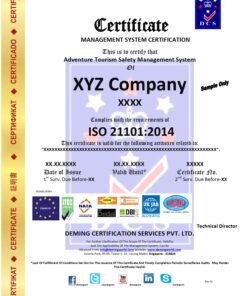material Safety data sheet MSDS Certificate for amazon flipcart export transport
Original price was: ₹16,000.00.₹8,000.00Current price is: ₹8,000.00.
Passport of safety of chemical products (or material safety data sheet MSDS) is a document, relating to the form of technical documentation. The above-mentioned document has a single purpose – to inform people about all the characteristics (chemical, biological, radioactive, explosive, etc.) of the substances with which they have to work.
Safety passport and the certificate
MSDS, in contrast to the certificate (Declaration) of conformity does not contain information that the certified chemical products are qualitative or safe. This document also does not indicate the compliance of the certified product characteristics to the regulative document of the Russian Federation. If you need to assure customers about the quality of your product, you should make certificate (Declaration) of conformity.
Furthermore, all information, which the document (certificate) contains, should not be interpreted as a guide to the use of the substance. It is important to remember that certification center, where this document was issued assumes no legal responsibility for the truthfulness of the information provided in the certificate.
Thus, using any of the chemical product, which potentially can cause you harm, be sure to read the instructions of use, because MSDS may only serve as an additional information on the characteristics of the products.
The need for the passport of chemical products safety
Registration of the passport of safety is a necessary and important procedure, because the document has to be provided to the officer of the customs service of the Russian Federation in case of import or export of chemical products. Do not forget that the passport (certificate) of chemical products safety simplify the procedure of obtaining other documents of certification.
Yet another argument to obtain safety data sheet MSDS is the availability of its counterpart in the international arena, and, therefore, this document opens prospects for each organization to expand their business.
You can registrate the passport of chemical products safety in any certification authority, which has a permission from the Rosstandard.
How to obtain a passport of chemical products safety
When you contact the certification center “Russian Federation” to obtain safety data sheet MSDS, you will be pleasantly surprised by our service and competence.
Our experts will be glad to answer all your questions. Asking a question is fairly easy – just submit the application form.
If you already want to make the passport (certificate) of chemical product safety, leave your coordinates in this section of the site and we`ll contact you.
Registration of passport of chemical products safety is carried out in all certification authorities in the Russian Federation according to the following scheme:
* client`s request with an application at the centre of certification;
* provision of documents;
* testing of certifiable substances;
What information must MSDS contain
The staff of the laboratory hold dozens of analyses to identify all the characteristics of the substance. All the data is recorded in the enactment, which provides registration of the passport.
MSDS contains the following information:
* Identification of the certifiable substance;
* Information about the manufacturer company the of the substance;
* The chemical composition of the substance which is registrated in safety data sheet MSDS;
In conclusion, let us recall that the passport (certificate) the safety of the substance (or as it is also called «safety data sheet MSDS») – is a document, which maximally inform about all the characteristics of the particular substance.






Reviews
There are no reviews yet.